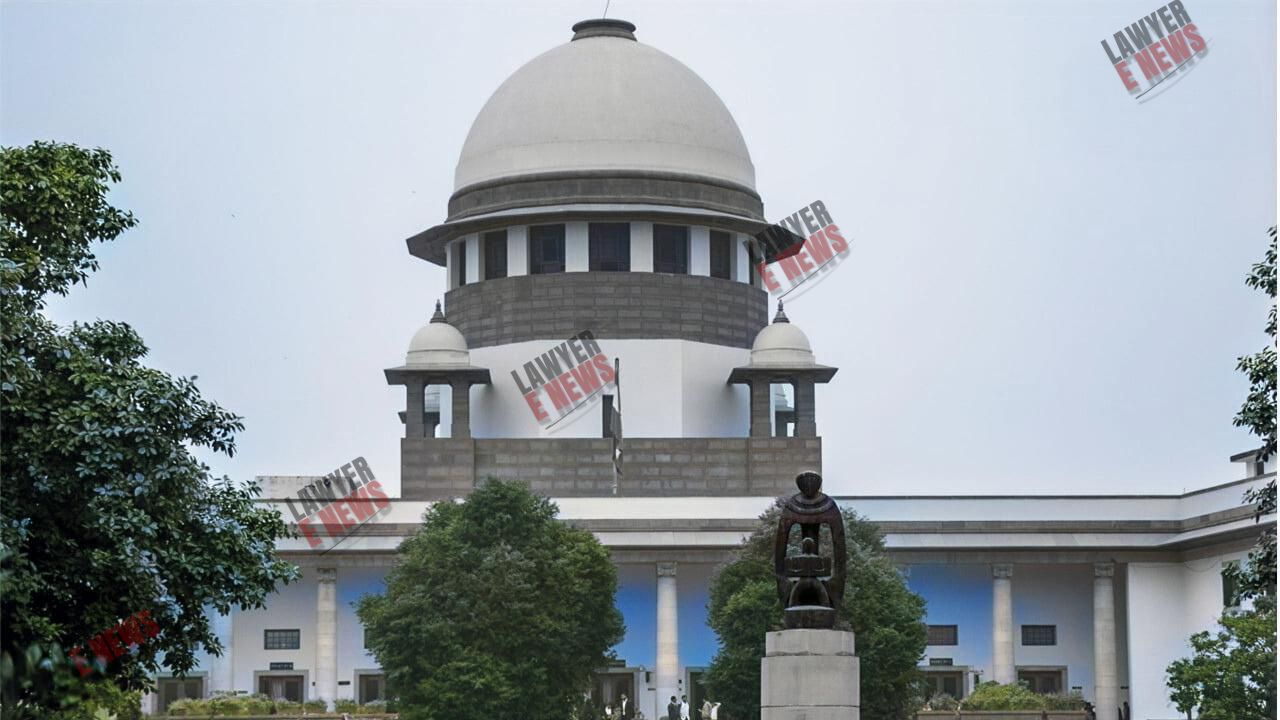-
by Admin
15 December 2025 12:32 AM



Supreme Court of India set aside the conviction of a man accused of murdering his wife, holding that the prosecution had failed to establish guilt beyond reasonable doubt. The case was based entirely on circumstantial evidence, but the Court found that the chain of evidence was incomplete, key prosecution witnesses had turned hostile, and medical evidence did not conclusively establish strangulation as the cause of death.
"The fundamental principle of criminal law is that the prosecution must prove its case beyond all reasonable doubt. Mere suspicion, no matter how strong, cannot substitute proof," the Court observed while acquitting the appellant and ordering his immediate release after over ten years in custody.
The Supreme Court criticized the lower courts for relying on an inconclusive post-mortem report and emphasized that Section 106 of the Evidence Act cannot be used to shift the burden of proof onto the accused when the prosecution itself has failed to establish a prima facie case.
Prosecution's Case Falls Apart as Witnesses Turn Hostile
The appellant, Ravi, was convicted for the murder of his first wife, Jamni, who was found dead on August 22, 2014, in their jhuggi (hutment) in Amritsar, Punjab. The prosecution alleged that Ravi, along with his second wife, had strangled the deceased using a rope, and later transported her body in a truck to their native village.
The prosecution built its case on circumstantial evidence, relying primarily on the testimony of the deceased’s brother (PW-1), sister (PW-2), and cousin (PW-3). However, during the trial, all three turned hostile, denying any knowledge of foul play.
"I do not know what happened to my sister. She was ill and died a natural death," said Chaina Ram (PW-1), the deceased’s brother, who had initially lodged the FIR but later claimed that he signed a blank paper and was unaware of its contents.
Rajo (PW-2), the deceased’s sister, who was alleged to be an eyewitness, also refuted the prosecution’s case, stating: "There was no dispute between my sister and her husband. She died due to illness and breathing problems, not by strangulation."
With the key witnesses denying the allegations, the case rested entirely on the post-mortem report and the recovery of a rope allegedly used for strangulation.
Post-Mortem Report Does Not Rule Out Natural Death
The post-mortem report stated that the cause of death was asphyxia due to hanging. However, during cross-examination, Dr. Mohan Lal Meena (PW-5), the medical expert who conducted the autopsy, admitted:
"Asphyxia can also result from chronic tuberculosis, which the deceased was reportedly suffering from. The ligature marks could also be due to the prolonged journey of the body in a truck and not necessarily from strangulation."
The Supreme Court noted that this medical testimony did not conclusively establish strangulation as the cause of death. The prosecution failed to produce any evidence to counter the possibility that the deceased had died due to tuberculosis.
"When a case rests solely on medical evidence, and that evidence itself admits multiple possibilities, the benefit of doubt must go to the accused," the Court ruled.
"Circumstantial Evidence Must Exclude Every Other Hypothesis" – Supreme Court Lays Down the Standard of Proof
Referring to the five golden principles of circumstantial evidence laid down in Sharad Birdhichand Sarda v. State of Maharashtra, the Supreme Court observed:
"The circumstances from which guilt is inferred must be fully established and must exclude every other hypothesis except that of the guilt of the accused. If an alternative explanation exists, the accused cannot be convicted."
Applying this principle, the Court held that: The prosecution failed to provide a complete chain of evidence. Medical evidence was inconclusive. The rope allegedly used for strangulation was a common household item, easily available in the market.
"A conviction cannot be based on guesswork. The prosecution must prove that no other explanation is possible. In this case, that standard was not met," the Court stated.
"Section 106 of the Evidence Act Cannot Fill the Gaps in the Prosecution’s Case"
The State argued that since the death occurred inside the appellant’s jhuggi, he was obligated to explain the circumstances under Section 106 of the Indian Evidence Act.
Rejecting this argument, the Supreme Court ruled: "Section 106 does not absolve the prosecution of its fundamental duty to prove the case beyond reasonable doubt. The burden of proof always lies on the prosecution. It is only when the prosecution establishes a prima facie case that the burden shifts to the accused."
Citing Anees v. State Govt. of NCT, the Court warned against the misuse of Section 106 to convict an accused in the absence of credible evidence.
"Section 106 is not a tool for making up deficiencies in the prosecution’s case. The prosecution must first discharge its own burden before calling upon the accused to explain anything," the Court held.
Accused’s Statement Under Section 313 CrPC Strengthens the Case for Acquittal
In his statement under Section 313 of the CrPC, Ravi categorically stated that his wife died due to tuberculosis and that she was receiving treatment at Beas Hospital.
The Supreme Court noted that the prosecution failed to disprove this defense, as it:
Did not produce medical records to contradict Ravi’s claim.
Did not seek a re-examination of the post-mortem doctor to rule out tuberculosis as a possible cause of death.
"When an accused offers a reasonable alternative explanation, it is the duty of the prosecution to refute it with solid evidence. Failure to do so strengthens the case for acquittal," the Court held.
Acquittal and Immediate Release After Over a Decade in Custody
The Supreme Court found that Ravi had already spent more than ten years in custody and saw no justification for further incarceration.
"A person cannot be deprived of his liberty for over a decade based on incomplete and unreliable evidence. Justice demands his immediate release," the Court declared.
Setting aside the conviction, the Court ordered: "The appellant is directed to be released from custody forthwith. The appeal is allowed, and the impugned judgment is set aside."
The Supreme Court’s ruling reaffirms the fundamental principles of criminal law—that the prosecution must prove guilt beyond reasonable doubt, circumstantial evidence must exclude all other possibilities, and the burden of proof cannot be shifted onto the accused arbitrarily.
As the Court emphatically stated: "Suspicion, however strong, cannot replace proof. A person cannot be convicted merely because he was the husband of the deceased. The law demands conclusive evidence, not conjecture."
By ensuring that an accused is not convicted on weak and inconclusive evidence, this judgment upholds the constitutional guarantee of a fair trial and the presumption of innocence. It will serve as an important precedent in criminal law, particularly in cases where convictions are based purely on circumstantial evidence.
